
Eleven months earlier to the day, both Vivian and I sat down with our ipads and a smart phone running an atomic clock app. After studying a satellite image of St George Island State Park campground, viewing each site at street-level, and taking measurements of selected sites on Google Earth, we chose 3 or 4 sites we thought adequately sized for the RV. At about 7:30 am, we each got on ReserveAmerica website and honed in on the state park’s campground and chose an available campsite from among our picks. This went on for about seven days and on each day at exactly 7:59:55, we both hit the book now button on our chosen site and each time we failed. Finally, on the morning of May 11, 2020, we succeeded in securing a campsite for five nights beginning April 11, 2021. From that point on, we commenced to build our travel itinerary for 2021.
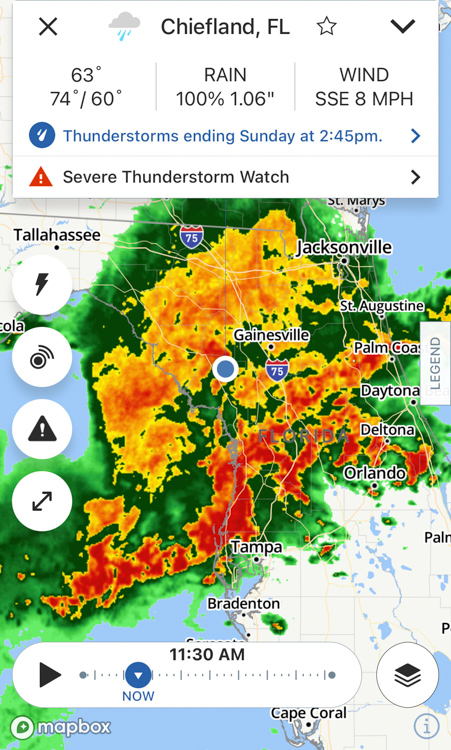
Now that you know how insanely difficult it is to get a Florida state park reservation, it will make sense why we were not going to let a little ol’ storm get in our way. It tried and it almost succeeded. This time of year, it isn’t easy getting out of Florida, especially when the starting point is as far south as you can get on the tip. A grueling 8-hour drive from Chokoloskee to a rural campground near small town Chiefland was our initiation into our 2021 travels. Seems everyone came to Florida over spring break and everyone decided to leave on April 10. Heavy traffic, long crawls through road construction areas and consistent rain made us think twice about leaving our paradise island in southern Florida.
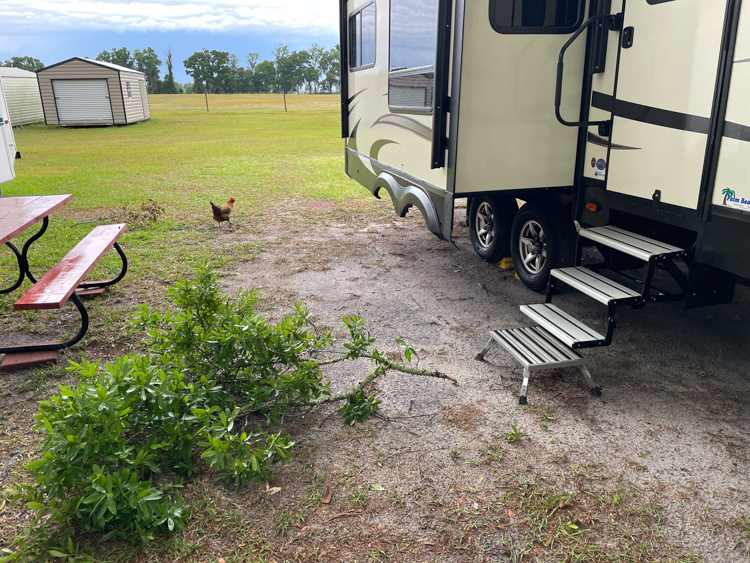

But we did it. After all, we had hard-earned reservations at St. George Island, one of Florida’s best state parks, and we were not about to give that up. After spending the first night and the entire next morning at Breezy Acres RV Campground listening to the rain pelt our rig, we finally got ourselves back out on the road at 2:30 pm for the 3-hr drive to the park.

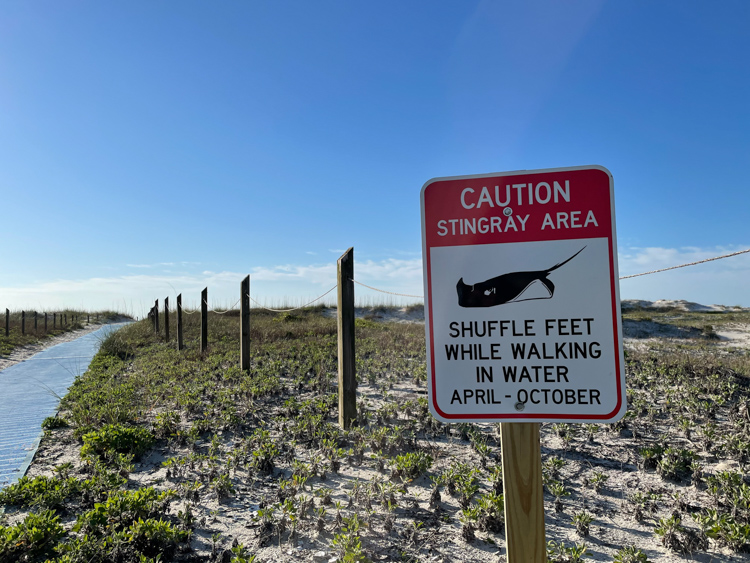
What is so special about St. George Island? Other than requiring an atomic clock and two people to get a reservation, it is one of Florida’s most pristine and beautiful sand dune beaches. Gorgeous St. George Island is in the middle of the forgotten coast and the modest drive on highway 98 through the coastal towns of Panacea and Carabelle makes you realize this really is the forgotten coast. Compared to most of Florida’s development-saturated coastline, this area is low key and offers a sizeable dose of wilderness.

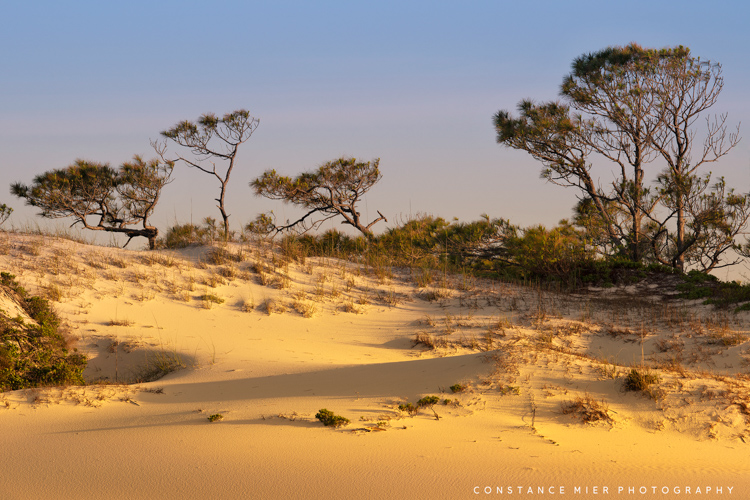
Despite the nearby charming little towns and inviting wilderness areas such as Tate’s Hell Forest, we had no compelling reason to leave the state park until it was time to hitch up and leave. With four full days and one additional morning to do what we like to do most -fish and photograph, we concentrated all our efforts within a small region – a narrow band of a sand dune island. And we had friends to share that with as they too put fishing and photography high on their list of things to do and they too made their reservations 11 months in advance.


Two hundred miles of coastline comprise the Forgotten Coast and much of it contains Florida’s last remaining stretch of unspoiled, pristine Gulf Coast beaches. A small section that is St George Island belongs to this coastal section of Florida’s panhandle. Later, toward the end of our travels this year, I will describe the quaint and charming communities and some of the forested wilderness areas of the Forgotten Coast because our 2021 travels will end here just as it began. That is, as my mother would say, “God Willing and the Creek Don’t Rise”. But for now, let me tell you about the sand that makes up pretty much the entire St George Island State Park.
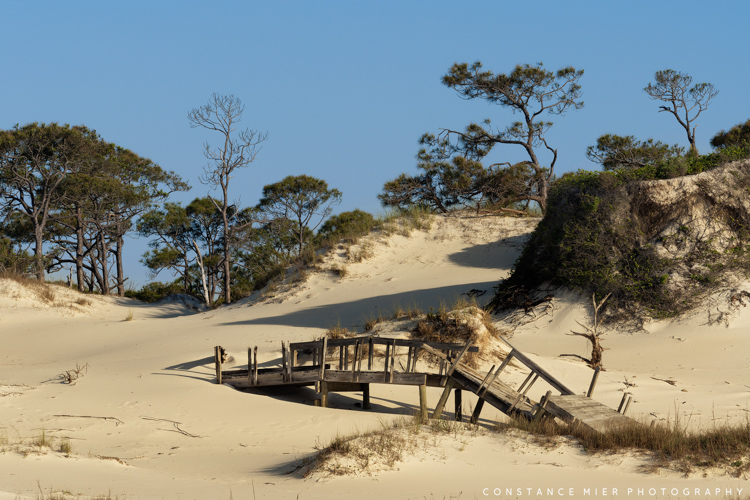

Dunes are created by wind-blown sand. And amazingly as the sand piles grow, deep-rooted plants colonize on them. As organic materials accumulate, more plants grow thereby strengthening the dune which becomes known as a scrub zone. These robust dunes, like the mangrove islands of the southern Gulf Coast serve as a natural barrier from high tides and storm surges and help protect the inland areas from erosion. And when not pockmarked from the footprints of humans, these dunes have a wild and graceful wind-swept beauty to them. Evidence of the effects of wind is seen everywhere – trees uniformly bent and smooth sweeps of sand mounds formed at its will. Nature dictated by weather and the birds reacting in a similar way. As we breezed into the campground on the heels of a storm, warblers and other songbirds had already landed on the island to rest and replenish their bodies for a day in the beachy pine forests before continuing their northerly migration.
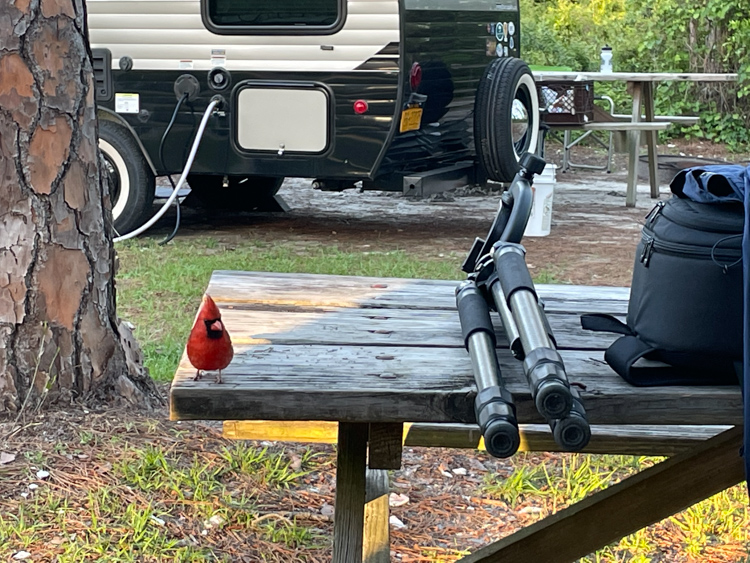
And then there are the pompano, which played a significant role during our short stay. Pompano have a narrow preference for water temperatures (68 to 75 degrees) and like birds are highly migratory along Florida’s coastline. Come spring, they migrate north and then west along Florida’s Gulf Coast. For fisherman, the most likely place to catch them is in the surf, where there is lots of water movement. And this is where you will see fishermen lined up along the beach with at least 2 lines in the water each. Lucky for me, I was among three fishermen, and we had fresh pompano for dinner – not once, but twice, and again for lunch.

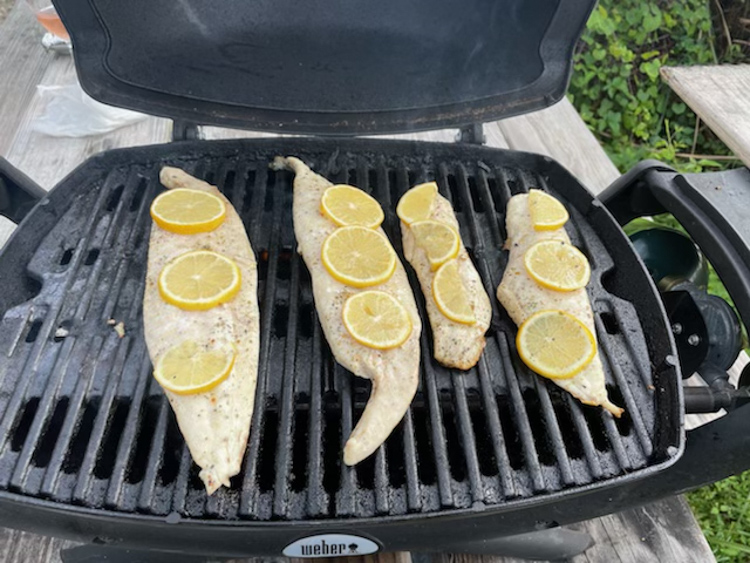
And there was some early morning quality time for photography. Enamored with the form of the sand dunes, I used what little time I had with sweet light to capture them. When it came time to leave, if not for the two days of rain, Vivian and I would have had to drag our tired bodies out of there.

As it were, the rain and overcast sky were relentless during our last full day on the island and the morning we left. Consequently, precious time was given to us for cleaning, which equated to sand removal from the interior. No matter how skilled you are at sand management, it still manages to work its way into everything.
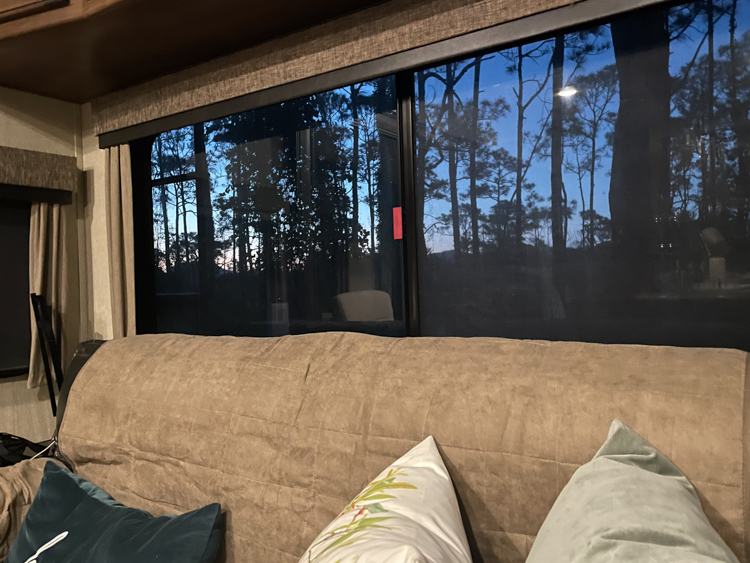
As I write this blog one day after leaving St. George, we remain in a holding pattern in Florida’s panhandle, this time about 100 miles north of St. George. The gray overcast skies and intermittent rain continue to dampen our spirits as we wait for our second shot appointment. Once fully vaccinated, the skies will open up and the sun will shine (tongue and cheek, folks). And we will once again leave Florida behind to explore the United States. I cannot wait to photograph more sand dunes, this time in New Mexico. But before we get there, we have Cajun culture to immerse ourselves in and the world’s largest cypress forest to explore. Stayed tuned.

Wow. You go through a lot of trouble to book your sites, but I understand why you do this given you proclivity to stay at state parks. We had a horrendous time at Stone Mountain Family Park (state owned) with the narrow roads and tight spots. The pompano looks delicious! Look forward to reading more about your travels!
LikeLike
Yes, there are some state parks worth visiting and worth the nightmare of going through the reservation system. We do use google earths measuring tool to check out how difficult it is to get our rig into or out of the sites. Then and only then will we make the reservation. St George island was quite easy for big rigs, our friends are in a 45’ diesel pusher and managed easily. Then even had space for their tow vehicle.
LikeLike
Enjoying reading on how vanlife works over there and your travels. Your photos are expressive! 👍
LikeLike